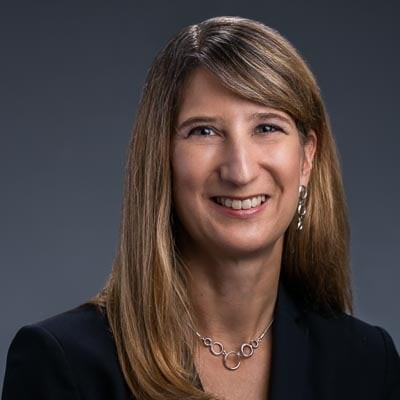Thought Leaders in Cloud Computing: Karen Gondoly, CEO of Leostream (Part 1)

If you haven’t already, please study our free Bootstrapping course and the Investor Introductions page.
Karen provides a precise analysis of the infrastructure for remote access in the Covid world, including gaps open for entrepreneurship.
Sramana Mitra: Let’s start introducing our audience to yourself as well as Leostream.
Karen Gondoly: First of all, thanks for having me. My name is Karen Gondoly. I am the CEO and VP of Product Management for a software company called Leostream. We are based here in Boston, Massachusetts. Leostream provides a vendor-agnostic remote access platform.
The idea behind our platform is to allow people to build a hosted desktop or application environment that works best for them using the technologies that are most suitable to their needs. We want to be a single platform where people can manage and access everything that is in their data center or the cloud. Our whole shtick has always been connecting any user, from any device to anything. We can manage those connections.
Sramana Mitra: Specifically, where is the innovation of Leostream?
Karen Gondoly: You could say usability because we take a vendor-agnostic approach. If you think about the vendors in our space, everyone knows VMware and Citrix, which are full-stack solutions. There’s the hypervisor, connection management layer, and profile management. They have all these monolithic pieces. You are forced to stay in that stack. What we are is a piece of that stack.
The way that our platform is architected, it is easy for us to plug ourselves into the different stacks that these vendors provide. You can use our tool as one management layer for VMware alongside hosted hardware and all of the different cloud vendors. We are able to be an overarching platform for everything that you want to manage access to or build an environment out of.
Sramana Mitra: Let’s double-click down on some of your real-world customer use cases to make it a bit more visceral. Take us through a few scenarios of what is happening. When are you getting brought in? What difference are you making to those environments?
Karen Gondoly: We have been around since 2002. The customers that we worked with have meandered along a path as the technology changed over time. Originally, we did a lot with people who were managing access to Linux. These were engineering firms and people who primarily had applications that ran more on Linux. We could manage Linux-based systems while the other vendors in the space couldn’t.
Over time, our use cases and our customers have changed. What we have seen over the past year and a half is a big uptick and adoption of our software because remote work use cases gained a lot of traction throughout the pandemic. One area we have focused on heavily is media and entertainment. We were helping post-production engineers get access to data and the applications that lived on-premise or in data centers that they needed while working off-site.
When everything shut down last year, these engineers were asking their IT departments, “Hey, I need to connect back to my work station which is in the office. I need to be able to continue my work from home.” The IT department of companies were scrambling to support those use cases. We worked in conjunction with them to look at what the use cases were and to figure out how we can make our technology solve the problems they had and help them implement the solution in their environment so that their engineers could continue working.
There is a piece of our platform called the Leostream Gateway. It provides VPN-less with remote access. A lot of enterprises noticed that when they sent their users home and everyone was coming onto the VPN, there was a huge performance pressure on the platform. There was too much traffic on the VPN and performance suffered. It was also too expensive and complicated to scale up these VPN solutions.
People came to us to leverage our Leostream Gateway and the rest of the platform so that they could connect the remote engineers without requiring the VPN. That was one use case we often saw as time went on during the pandemic. Once we had the media and entertainment up and running, we started hearing more from universities, higher education, and even K-12. Now, we had the schools coming to us and saying, “The students are going to be home, we have to figure out how to support remote learning.”
Again, the assets and resources that were on campus needed to be accessed at home by students to complete the course work. The students couldn’t take those assets home. Using our Gateway and the support that we have for different high-performance display protocols, we were able to facilitate people in engineering departments doing editing for movies. They could go home and still perform these tasks because we could give them access to the resources and their data center.
This segment is part 1 in the series : Thought Leaders in Cloud Computing: Karen Gondoly, CEO of Leostream
1 2
Featured Videos
Can 1M/1M Help Me Raise Money?
How Does 1M/1M Democratize Entrepreneurship Education?
How Does 1M/1M Democratize Management Consulting?
When Is The Right Time To Join 1M/1M?
Can 1M/1M Help Me With Business Development?
Can 1M/1M Help Me With Market Sizing?
Can 1M/1M Help Me Validate My Product?
Will I Have Private 1-on-1 Sessions In 1M/1M?
How Does 1M/1M Help Entrepreneurs Connect With Silicon Valley?
Mentoring or Consulting?
Why Does 1M/1M Charge $1000 a Year?
Why Does 1M/1M Partner With Local Organizations?
Why Don\’t Mentoring Networks Work?
Why Is It Important To Study With 1M/1M Now?
Dan Stewart Story
Vikrant Mathur Story
